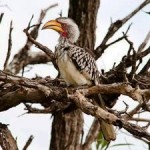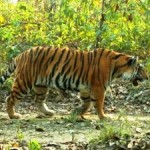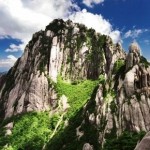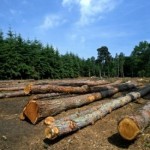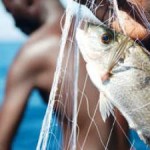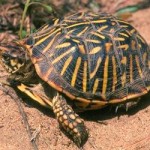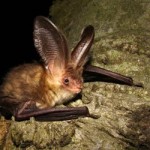“The growing food market is putting unsustainable pressure on these and other species,” says Jane Smart, Global Director of IUCN’s Biodiversity Group. “We urgently need to impose strict limits on harvesting and take appropriate measures to protect habitats.”
This Red List update also highlights several species that have been impacted by habitat destruction, including all 66 threatened chameleon species, despite some of these species occurring within protected areas. The Giant East Usambara Blade-horned Chameleon, (Kinyongia matschiei), endemic to the East Usambara mountains of Tanzania, has been listed as Endangered. Like many other chameleons, this species uses colour for communication. It also darkens when stressed and wraps its tail around branches to remain secure. Found in the Amani Nature Reserve, a protected area, this reptile is threatened by the clearance of forests for agriculture, charcoal production and extraction of timber.
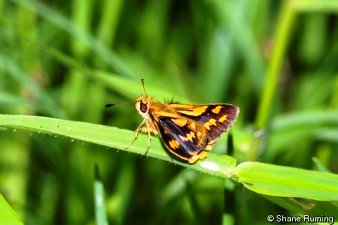
The Black Grass-dart Butterfly (Ocybadistes knightorum) has entered the IUCN Red List as Endangered. Found only in the northern New South Wales coastal region of Australia, the species is threatened primarily due to the invasion of introduced weeds and coastal development destroying its habitat. A significant proportion of its habitat exists in protected areas such as Bongil Bongil National Park and Gaagal Wonggan (South Beach) National Park, and the effective management of these areas could play an important role in securing the species’ future. The threat from weed invasion is being managed in some reserves where key habitat patches have responded well to weeding, resulting in successful habitat rehabilitation.
Two species have been declared Extinct due to habitat destruction. Plectostoma sciaphilum, a snail known from a single limestone hill in Peninsular Malaysia is now listed as Extinct as a result of the hill being entirely destroyed by limestone quarrying by a large company. The future of several other species in the region is uncertain for similar reasons. Whilst some mining companies are starting to take the necessary steps to reduce impact, IUCN is urging stronger commitment to prevent further extinctions.
The St. Helena Giant Earwig (Labidura herculeana) – the world’s largest known earwig attaining a length of up to 80 mm – has also gone extinct. Previously found in Horse Point Plain, a protected area on St. Helena Island, the last confirmed live adult of this insect was seen in May 1967. Since the early 1960s, its habitat has been degraded by the removal of nearly all shelter-providing surface stones for construction purposes. Increased predator pressures from mice, rats and invasive predatory invertebrates also contributed to the earwig’s extinction.
“These recent extinctions could have been avoided through better habitat protection,” says Simon Stuart, Chair of the IUCN Species Survival Commission. “Today’s update also highlights two amphibian species which have improved in status, thanks to successful management of Colombia’s Ranita Dorada Reserve, where they occur. We need to take more responsibility for our actions to see many more successes like this one, and to have a positive impact on the health of our planet.”
Check the following link for IUCN Red List of Threatened Species:
http://www.iucnredlist.org/
Source: IUCN.

